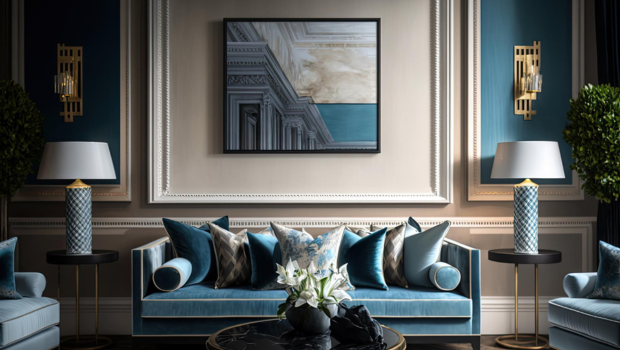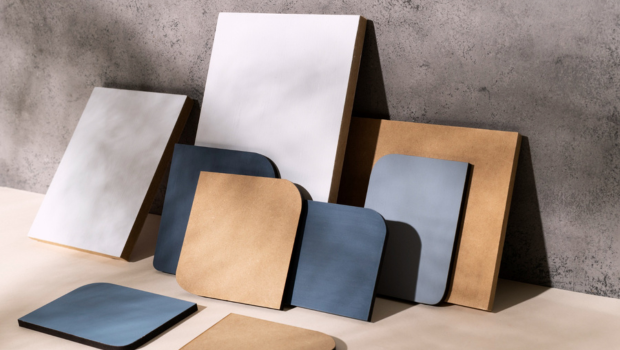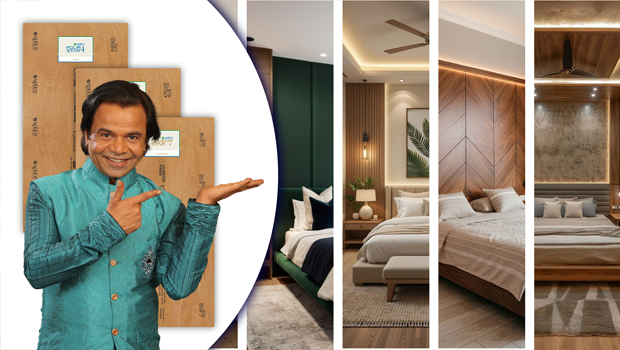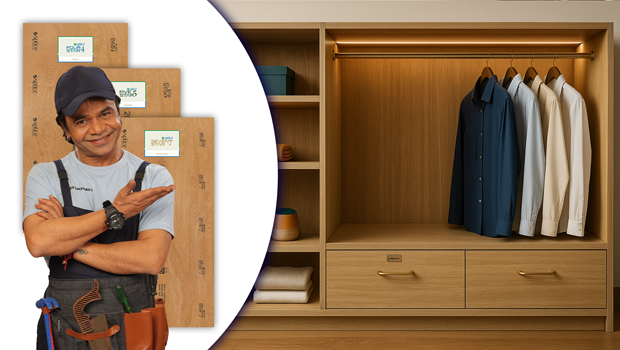.png)
Posted on August 11, 2025
Discover how to choose the right plywood and laminates for stylish, long-lasting bedroom interiors. Expert tips, styles, and care ideas for 2025.
Think about it — your bedroom isn’t just a place to sleep.
It’s where you toss your bag after a tiring day, where you scroll through your phone before drifting off, and where you wake up on weekends with the sunlight peeking through the curtains.
When most people start planning their interiors, they get caught up in wall colors, curtains, or lighting. All of that is important, sure, but here’s a little truth from years of seeing both great and not-so-great designs: what’s underneath the surface — the materials — determines how your bedroom will look in ten years.
That’s why plywood and laminates deserve a bigger spotlight. They aren’t just background players; they’re the foundation of your furniture and the reason it stays strong and stylish over time.
I’ve seen wardrobes that looked showroom-perfect on the first day, only to sag and warp after two monsoons. On the other hand, I’ve come across bed frames built more than 15 years ago that still feel solid, all because the owners chose the right plywood.
Here’s how it works: plywood is the muscle — it holds the structure together. Laminates, on the other hand, are the personality — the texture, the sheen, the pattern that catches your eye. Neglect either one, and you’ll be compromising the entire look and feel of the room.
Not all plywood is created equal, and the best choice depends on where and how you plan to use it.
If your bedroom furniture sits in a dry, well-ventilated area, Moisture Resistant (MR) plywood will serve you well. It’s a dependable choice for wardrobes, bed frames, and side tables. But if you live in a coastal city, have big windows, or face humid weather for most of the year, you might want to step up to Boiling Water Resistant (BWR) plywood. It’s tougher against moisture and won’t give in easily during damp spells.
And if you’re someone who likes to invest once and enjoy for decades, Gurjan or marine-grade plywood is the gold standard. I’ve seen furniture made from it that hasn’t lost its shape or sturdiness in over 20 years — it’s the kind of choice that feels expensive upfront but pays off in the long run.
As for thickness, 19mm works beautifully for wardrobes and cabinets, while 12mm is perfect for wall panels or decorative headboards where you don’t need heavy load-bearing strength. And if you’re asking for my go-to? Splice Ply’s engineered boards tick all the boxes for durability, resistance to warping, and termite protection.
If plywood is the skeleton, laminates are the skin — the part you see and touch every day. That means they don’t just need to look great; they also have to handle daily wear.
Matte laminates have a warm, soft appearance and work well if you want a cozy, relaxed bedroom. Glossy finishes, on the other hand, reflect light and can make smaller rooms feel bigger and brighter. Then there are textured laminates, which bring in depth and the charm of woodgrain or natural materials without the maintenance headache.
When it comes to color, lighter shades like cream, ash, or pastel tones keep the space airy. Darker colors such as walnut or deep blue create a rich, dramatic effect but can make a small room feel more intimate. For busy furniture surfaces like wardrobe doors, I always suggest scratch-resistant laminates. For accent walls or panels, you can have more fun with designer patterns.
For a modern minimalist look, I’d go for smooth, matte-finish laminates in neutral colors paired with clean, simple plywood furniture lines.
If you love warmth and texture, a rustic style works beautifully. Use a durable BWR plywood base and top it with textured woodgrain laminates, then add warm lighting to tie it all together.
For something more glamorous, luxury contemporary is the way to go. Premium Gurjan plywood topped with high-gloss or metallic-finish laminates instantly creates a bold, high-end look.
It’s usually the small details that decide whether your furniture lasts five years or fifteen. Take edge banding, for example — that slim strip along the furniture’s edge keeps moisture out and prevents peeling. Or soft-close hinges, which protect your wardrobe doors from constant slamming and help the fittings last longer.
Even a small design choice, like combining two laminate colors — say walnut with beige — can completely change the mood of the room and make it look more custom-made.
Maintaining plywood and laminates isn’t complicated. A quick dusting every few days keeps the surfaces scratch-free. Stick to mild cleaners; strong chemicals can damage the finish. Keep furniture out of direct sunlight where possible to avoid fading, and if you’re in a humid area, make it a habit to check for termites once in a while.
Great bedroom interiors aren’t just about colors and styling — they’re about making smart choices at the foundation level. By pairing strong plywood with the right laminates, you’re building furniture that’s both beautiful and dependable.
If you’re looking for materials that combine durability with design, Splice Ply’s range of plywood and laminates is worth exploring. Build it right the first time, and you’ll enjoy the results for years.
Q1: What’s the best plywood for wardrobes?
Moisture Resistant plywood works well in dry bedrooms; go for BWR if your furniture is near windows or moisture-prone areas.
Q2: Are laminates durable enough for daily use?
Yes, especially if you choose high-quality, scratch-resistant ones.
Q3: How can I make a small bedroom look bigger?
Use lighter laminate shades and consider a glossy finish to reflect light.
Q4: Can plywood furniture really last decades?
With premium-grade plywood and proper care, absolutely.
Q5: Should I choose matte or glossy laminates?
Matte creates a cozy feel, while glossy makes a room appear more spacious and bright.
 Drawing Room Interior Design Ideas That Never Go Out of Style
Drawing Room Interior Design Ideas That Never Go Out of Style How to Choose the Right Sunmica (Laminate) for Every Type of Furniture
How to Choose the Right Sunmica (Laminate) for Every Type of Furniture Top 5 Bedroom Interior Trends with Plywood in 2025
Top 5 Bedroom Interior Trends with Plywood in 2025.png) Different Types of Laminates & Their Applications: What’s Best for Your Home Interiors
Different Types of Laminates & Their Applications: What’s Best for Your Home Interiors.png) Diwali Decoration Ideas for Your Living Room - Splice Ply
Diwali Decoration Ideas for Your Living Room - Splice Ply 5 Reasons Why Splice Ply Plywood is Perfect for Modular Wardrobes
5 Reasons Why Splice Ply Plywood is Perfect for Modular Wardrobes.png) Premium Laminates for Wardrobes: Style Meets Durability
Premium Laminates for Wardrobes: Style Meets Durability.png) 5 Decorative Laminate Ideas for Kids Rooms
5 Decorative Laminate Ideas for Kids Rooms.png) Bedroom Interior Design: How to Choose the Right Plywood & Laminates for Long-Lasting Style
Bedroom Interior Design: How to Choose the Right Plywood & Laminates for Long-Lasting Style.jpg) Struggling with Bedroom space? Fitted wardrobes are here!
Struggling with Bedroom space? Fitted wardrobes are here!